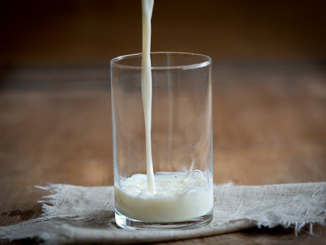Introduction
Lactational abnormalities are not found usually in mares. However, when there is a risk to the foal (of a particular mare), concern of mare owner’s increases. However, equine lactational have got less documentation in veterinary literature as compared to other species as there is adequate availability of mare’s milk substitute. Lactational abnormalities can be classified as functional or infectious. The former includes agalactia, galactorrhoea, precocious lactation, premature lactation. However, the latter mainly includes mastitis as infectious abnormality.

Functional lactational abnormalities include:
- Agalactia
Agalactia can be understood as the failure of milk secretion due to any cause other than the normal lactational ending. Firstly, it has to be differentiated with complete failure of milk let down. Agalactic mares have slacked udder, and not engorged with milk. However, some maiden mares with tender oedematous mammary glands or nervous mares are encountered for their reluctance to relaxation and nursing. Thus, there occurs milk retention in glandular alveoli. To compensate the problem, administration of phenothiazine tranquilizers and warm towel massages on the udder can be practiced. The former, with its calming effect will also, stimulate the release of prolactin in order to augment lactation. Once, mares are relaxed, 10-20 units of oxytocin administration can be of good help to stimulate milk let down.
In some maiden and multiparous mares, that have small udders , and honey-like mammary secretions, agalactia has been found as delayed onset of lactation. However, agalactia in mares without development of udder is considered as a case of fescue toxicity. This occurs due to the feeding of mares with infected fescue by endophyte fungus- Acremonium coenophialum. The fungus produces an ergot alkaloid toxin , which suppresses prolactin release. Similar symptoms are observed , due to ingestion of (ergot) Claviceps purpura. This fescue toxicity is mostly encountered in last trimester of mares. Moreover, in addition to agalactia, the toxicity may lead to reduced fertility, prolonged gestation, thickened placenta, neonatal asphyxia etc. If there is prolonged gestation, then mare may have developed udder upto the due date, but as udder involutes, agalactia occurs by the time of delivery.
Such mares, can be treated for overcoming the suppression of prolactin and probably TRH. In fescue-related agalactia, dopamine receptor antagonist–perphenazine can be used at the dose rate of 0.3mg/kg PO twice a day. However, this may have some side effects as well like, colic, hyperesthesia, ataxia, posterior paresis etc. So, dose has to be adjusted and monitored accordingly. Others include administration of domperidone @ 1.1 mg/kg PO once a day.
Prevention is always better than cure. So, pregnant mares must be fed with non-fescue pastures. There should be toxin dilution by including legume diet in the pastures up to 20%. Infected fescue must be killed with herbicides. Mares must not be fed with fescue diets in last trimester of their gestation. Insufficient energy intake, negative energy balance must be considered. As, when adequate ration is there, chances of occurrence of stress, pain or even some disease decreases.
- Hypogalactia
It can be understood as a condition of lower milk production . This, may be a result of malnutrition, and inadequate ration to mares. Lactating mare requires about 1.7 times, and 1.5 times of the energy during early and late lactation, (respectively) as required in non-lactating mares. Hence, its necessary to have a sound feeding program in order to maintain normal lactation. Ration adequacy can be judged by the body condition score (BCS) of the animal .Certain other etiologies may include stress, decreased water intake, mineral deficiencies like selenium deficiency etc.
- Galactorrhoea
Galactorrhea can be understood as premature lactation or the occurrence of milky discharge from teats before the actual time of lactation (i.e. post-delivery). Lactation in yearling, weanling fillies and non-pregnant or even maiden mares may also found due to unknown reasons. As the cause is unknown, so the treatment is done empirically in such cases. It may also include prevention of nursing by other animals, feed and water restrictions etc. Theoretically, galactorrhoea is associated with prolactin levels elevation. Thus, prolactin suppression can be of good help for the same.
Premature lactation occurring between mid to late gestation may arise different problems with pregnancy. Placental separation, death of one twin, placentitis, abortions etc. can be found associated with the condition. Progesterone supplementation is helpful. It is considered that , there is no specific treatment for galactorrhea. Semi-synthetic ergot alkaloid like bromocriptine must not be administered (for suppressing prolactin levels), as this may suppress the progesterone levels in the affected mares, and thereby leading to dystocia, placental thickening, and reduced neonatal survival etc. in later stages of gestation.
However, premature lactation, during pregnancy has no direct effect on post-partum lactation, but the colostrum level of the latter may get affected.
- Lactational Tetany
Lactational tetany can be considered as a metabolic disease arising due to hypocalcemia appropriately rather as a functional disease. Its an uncommon condition occurring due to feeding of mares on lush-green pastures but producing large quantities of milk. The incidence of disease are more in first two weeks of lactation, foal heat or it may also occur after weaning. It may or may not occur with hypomagnesemia. However, few cases may be associated with hypermagnesemia. Heavy load of work and prolonged transport are precipitative causes for the same. Clinical signs may include gait stiffness, excitability, muscle fasciculation, muscle paresis, tachycardia, sweating, flared nostrils etc. Others include absence of deification and urination; reduced intestinal motility; hindered swallowing; convulsions; coma ; and death in severe cases. The disease has to be differentially diagnosed with diseases like early stages of tetanus; or hypocalcemia occurring due to other reasons like pancreatic diseases, renal diseases, equine rhabdomyolysis, beetle toxicity etc.
The treatment of choice is intravenous infusion of 20% calcium gluconate solution. Dose of 250-500ml diluted with saline or dextrose is usually efficient to treat 500kg mare. This can be followed by second dose at interval of 15-30 minutes with the previous one(in case when signs don’t get suppressed effectively). Hypomagnesemic mares can be benefitted from calcium preparations containing magnesium (which are designed for use in cattle).
Infectious cause of lactational abnormality primarily includes mastitis.
- Mastitis
Mastitis can be understood as the inflammatory condition of the udder tissue .Its rarely encountered in mare and if occurs, then as isolated case instead as herd problem. Although the disease can occur at any stage , but mostly found during weaning, and in mares who haven’t been pregnant for a long time. Clinical signs may include red, inflammed, hot, swollen, painful udder, loss in apatite, ventral edema, hind limb stiffness, lameness etc. The milk if secreted is thick in consistency and may contain inflammatory cells depending upon severity of infection. Most common etiologies for mastitis include Streptococcus spp. ( S. zooepidemicus, S. agalactia, S. viridians), Klebsiella spp., Actinobacillus spp., Pastuerella spp., Enterobacter spp.,etc. Mycotic mastitis can also occur in mares as disseminated infection, in Coccidioides immitis infection. Gangrenous mastitis and verminous mastitis may also occur in mares (as a result of Cephalobus infestation).
Treatment may include systemic anti-biosis, intra-mammary infusions, hot packs, frequent milking, NSAIDs and additional supportive therapies if required. The choice of antibiotic depend upon the culture and sensitivity of bacteria/ micro-organisms. Penicillin, gentamicin and trimethoprim-sulfonamides are good choices till the culture and sensitivity test haven’t been performed. Administration of intramammary- infusions of bovines is difficult in mares. Treatment may be unsuccessful, if not treated carefully and may lead to glandular system atrophy, and persistent infection.
References
- McCue PM: Lactation. In McKinnon AO, Voss JL (eds): Equine reproduction. Philadelphia: Lea & Febiger, 1993, p 17.
- Schryver HF ,Hintz HF: Nutrition and reproduction in the horse. In Morrow DA (ed): Current therapy in theriogenology. Philadelphia: WB Saunders, 1980, p 768
- Ireland FA, Loch WE, Anthony RV, et al: The use of bromocriptine and perphenazine in the study of fescue toxicosis in pregnant pony mares. Proc Equine Nutr Phys Symp 1989; p 201
- Spensley MS: Alterations in lactation. In Smith PP(ed): Large animal internal medicine. St. Louis: CV Mosby, 1990, p 258
- Cullor JS, Tyler JW, Smith BP: Disorders of the mammary gland. In Smith BP (ed): Large animal internal medicine. St. Louis: CV Mosby, 1990, p 1064.
- Roberts MC: Pseudomonas aeruginosa mastitis in a dry non-pregnant pony mare. Equine Vet J 1986;18:146
- Rossdale PD, Ricketts SW: Mastitis. In Equine stud farm medicine, 2nd Philadelphia: Lea & Febriger, 1980, p 371
- Saunders Elsevier, In Abnormalities of Lactation, Steven D. Van Camp and Mary Beth Stanton: Current Therapy in Large Animal Theriogenology, Second edition, ISBN 13: 978-0-7216-9323-1, ISBN 10: 0-7216-9323-7, p 131
- https://www.mayoclinic.org
- https://www.merriam-webster.com
|
The content of the articles are accurate and true to the best of the author’s knowledge. It is not meant to substitute for diagnosis, prognosis, treatment, prescription, or formal and individualized advice from a veterinary medical professional. Animals exhibiting signs and symptoms of distress should be seen by a veterinarian immediately. |






Be the first to comment